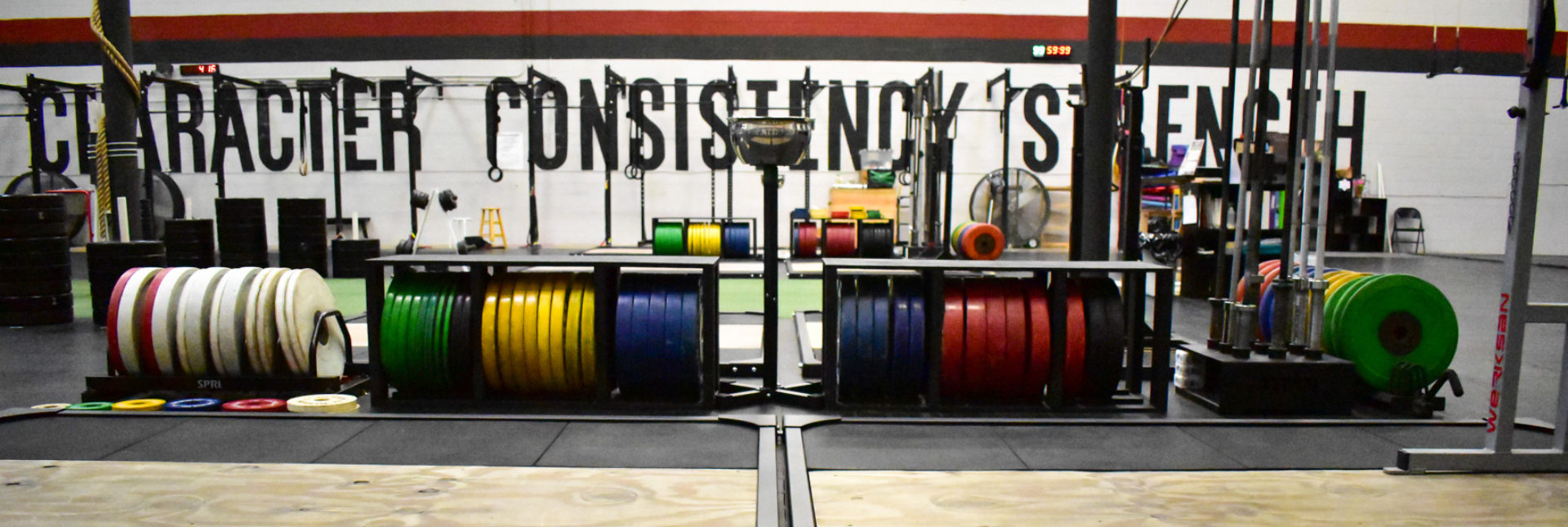
It’s not a big secret that all gyms are NOT created equal. Hell, I spend a vast majority of my time each week in gyms. Between training my clients full time at 24 Hour Fitness, and devoting anywhere from 8-10 hours weekly to my own training, there’s an easy 45-55 hours weekly I spend in some sort of fitness based facility. So, if you were wondering if I was qualified enough to explain the difference between a gym and a training hall, there’s your answer. The facility that pays my bills is a gym, and the facility I have the pleasure of training at is a full blown training hall (located at Fairleigh Dickenson University in Madison, New Jersey).
So what’s the difference? I’ll explain that because it’s pretty simple, and then I’ll dive into what goes into creating a GOOD training hall, should you decide to put one together one day. Throughout my time in this sport I’ve had the pleasure of training in various locations, including Advanced Fitness and Performance (Sarasota, Florida), Lost Battalion Hall (Queens, NYC), my current home base (FDU Training Hall), Moorestown Weightlifting (Moorestown, New Jersey), Pivotal Training Center (Southampton, New Jersey), CrossFit 813/813 Weightlifting (Tampa, Florida), Tampa Bay Athletics (Tampa, Florida), The Next Level Training Center (Tampa, Florida), various training halls at national competitions, and various health club gyms that range in quality (Anytime Fitness, 24 Hour Fitness, Lifetime Athletic Club, and Equinox).
The difference between a gym and a training hall lies solely in this: Gyms cater to everyone, athlete or general health seeker, while training halls cater specifically to athletes. In a gym you’ll find cardio equipment, shiny machines, barbells, very few squat racks, metal weight plates, dumbbells, and anything else that the general wellness industry deems necessary to help people reach their fitness goals. In a training hall, you’ll find chalk covered platforms, bars, rubber weights made to be dropped, various blocks or boxes of different heights, a plethora of squat racks (usually portable so they can be moved to different platforms), and there may even be a set or two of jerk boxes. Regardless, a training hall will only cater to athletes looking to be stronger and faster and is the holy grail for the competitive weightlifter.
There are a few things that set a good training hall apart from a not so good place to train. I’ve had my experiences with both, and these things are both tangible and non tangible. So let’s start with what you can actually see and put your chalk covered hands on:
PLATFORMS
This should really go without saying. But, if you’ve never tried to lift off of a rubber floor, then I’d suppose you may not know the difference. The purpose of the wooden platform is to help the lifter create as much force as possible. Rubber floors will slightly compress under the feet and dampen some of the force being generated by the lifter. I also want to point out that the training platforms should have rubber on either side to drop the barbell onto. This will help preserve the longevity of the bar and weights. Yes, I’m aware that competition platforms are not like this. This is to give the lifter plenty of room to save a lift if necessary. However, one competition is not enough drops of the bar to ruin it or the competition weights being dropped. Competition bars and weights are rarely used, while training bars and weights see daily usage and will quickly deteriorate in quality if not dropped on a rubber surface.
BARS
Invest in some good bars for your training hall, and make sure they are properly stored on a bar rack and cleaned off after training. Eleiko, Werksan, DHS, York (if you can still get your hands on one), and Pendlay all make quality training bars. It makes zero sense to me to beat on a bar for hours, cover it in chalk, and then leave it out. Take your weights off, clean it up, and put the thing away. Especially if you’re making a $600-$1500 investment in a quality bar. Stay away from the cheaper bars, unless you have the money to replace them every year. I’ve seen cheap bars lock up and bend quickly. While a quality training bar can last upwards of ten years.
WEIGHTS
Typically, bars and weights come together in sets, however if you’re buying weights separate, get some nice plates and change plates. Cheap plates sometimes fit loosely on the ends of the bar and can scar them up pretty badly if dropped frequently. Cheap plates can also crack, and their metal inserts can pop out. I’m a big fan of the Eleiko, Werksan, DHS, and even the old school York and Uesaka plates. I’ve seen Pendlay, MDUSA, and even some black rubber plates scar up bar ends due to loose fitment, and it should really go without saying that the black rubber and cheap rubber plates won’t last long if used frequently.
SQUAT RACKS AND SQUAT STANDS
Ideally these should be portable, and sturdy enough to hold up under heavy squats. Squatting with your expensive bar on a metal rig is not ideal, but the knurling can be salvaged by taping over where the bar sets in the rack, or by using a lifting strap or some sticky foam for cushion. I say portable so that they can be moved out of the way while doing full lifts or their variations, and then put back on the platform for all of your work from the rack. Most good squat racks and stands come padded already, and I’ve had good use from Iron Mind, Werksan, and Sampson brands.
BOXES AND JERK BOXES
Obviously, these need to be sturdy. The heavier the better. We don’t need them coming down when dropping weight on them. They should also have rubber on the top. Ever been hit in the eye with splintered wood after dropping a bar from overhead? I have and it sucks. I’m pretty sure I came up with new curse word variations that would’ve made even the most violent criminals cringe after that episode. Also, again, the rubber helps preserve your bar and plates. Stall mat is cheap and easy to cut if you’re building your own set. Invest in some and save your equipment, and your eyes.
MACHINES
You may find a hyper extension, reverse hyper, or a bench press station in some training halls, along with various places to stretch or foam roll. While not necessary, they do help and can be picked up cheaply.
CHALK BOWLS
All training halls have them. Get a big one unless you want chalk all over your floor. A big ass bucket also works, but chalk is a privilege, not a right — abuse it and lose it. Just remember this, “Chalk trails lead to amateurs.”
BRUSHES, RAGS, DISINFECTANT
Stock up. Wire brushes are great for getting chalk out of the bar knurling, and you can finish with some spray on disinfectant and a rag to rid the bar of any blood or skin before someone else uses it. Think about your teammates here folks. There’s nothing more aggravating or disgusting than grabbing a bar, only to see that some jack wagon left half of their shins behind and didn’t clean up before putting the bar back.
BAR RACKS
Pretty simple. Peg board, bike hooks, etc all work. Make sure they’re level and stick them into some wood. Now you can store your shiny expensive bars on a level, supported surface so that they don’t bend.
Now, I’d like to touch on some intangibles that will set a good training hall apart from a crap place to train. These are even more important than the equipment, meaning that you can have the best of the best equipment, but without these you still don’t have a good place to train, so listen up!
RESPECT
Not just for the equipment, but the people around you also training. Nobody wants to train with someone that’s making a scene for every lift, slamming down the bar, tossing weights everywhere, wearing the chalk bowl all over them, walking in front of other people while they’re lifting, or just down right being a dick hole. So don’t be that person. I’d also encourage you all to keep your feet off of the bar. If you need to center it, grab onto it and roll the thing, and refrain from kicking it if you miss a lift. Especially if it’s NOT YOUR BAR. If I had just spent my hard earned money on a bar, and watched someone else put their feet all over it, slam it down, or kick the thing, that would be grounds for a talking to, in the face, with a chair. So have some respect for your facility, the equipment, and the people around you. Otherwise go buy your own shit and train alone. There’s also an unwritten rule we all observe at FDU about stepping over the bar. We just don’t do it. And you’ll never see European or Asian lifters in training videos doing it either. It’s a sign of respect to the bar. After all we are all working with the bar against gravity. Treat it well and it’ll treat you well.
CULTURE
Generally if you’re training with people, then you’re working towards the same goal they are. Lifting more weight and perfecting your movement patterns. So let’s try and stay positive to EVERYONE. If you are mortal enemies with someone, leave it outside of the gym. Sure, a little ball busting and shit talking is fine. It’s all in good fun. However if it begins to bring down the morale of the training hall, then knock it off. Positive reinforcement and encouragement can go a long way in keeping someone focused and level headed during a tough workout or even just a bad day. Keep your negativity to yourself. Also, if you aren’t the coach, then refrain from coaching. Let the coaches coach, the lifters lift, and focus on yourself. It’s as simple as that. If you’re going to have an outburst after missing a lift, then step outside and calm your tits. We all know it happens, so do us all a favor and get that type of negativity outside of the training hall. Nobody wants to lift with some loose cannon that’s constantly yelling obscenities and causing a scene.
Again, you could have spent your life’s savings on the best of the best equipment, but without respect and culture, your training hall is still a garbage place to train. I’ll take sub par equipment with a great atmosphere and a positive group of people over equipment any day. It’s the respect and culture of a facility that will ultimately help someone progress as an athlete — so long as the coaching and program are already in check, rather than the expensive equipment. I hope that we all learned something here. Happy training folks!
Get started today with 813 Weightlifting at www.KeepPulling.com/LIFT or contact us below!


